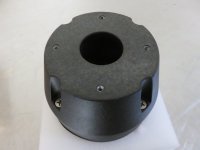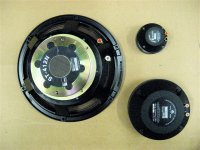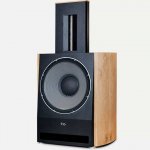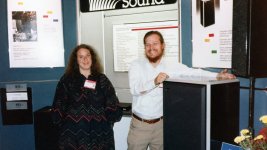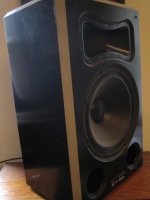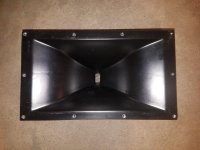Here's another rule of thumb 😉
500Hz can be considered as the 'ideal' crossover point for a big 2 way,
freely interpreted from the great minds of the past.
+ or - 300Hz and you're fine, depending on the driver.
Many would argue hornloading 'all the way' is sometimes the better solution.
I agree, but I wouldn't choose this path by using more than 2 frontloaded horns, hornloaded subs excluded.
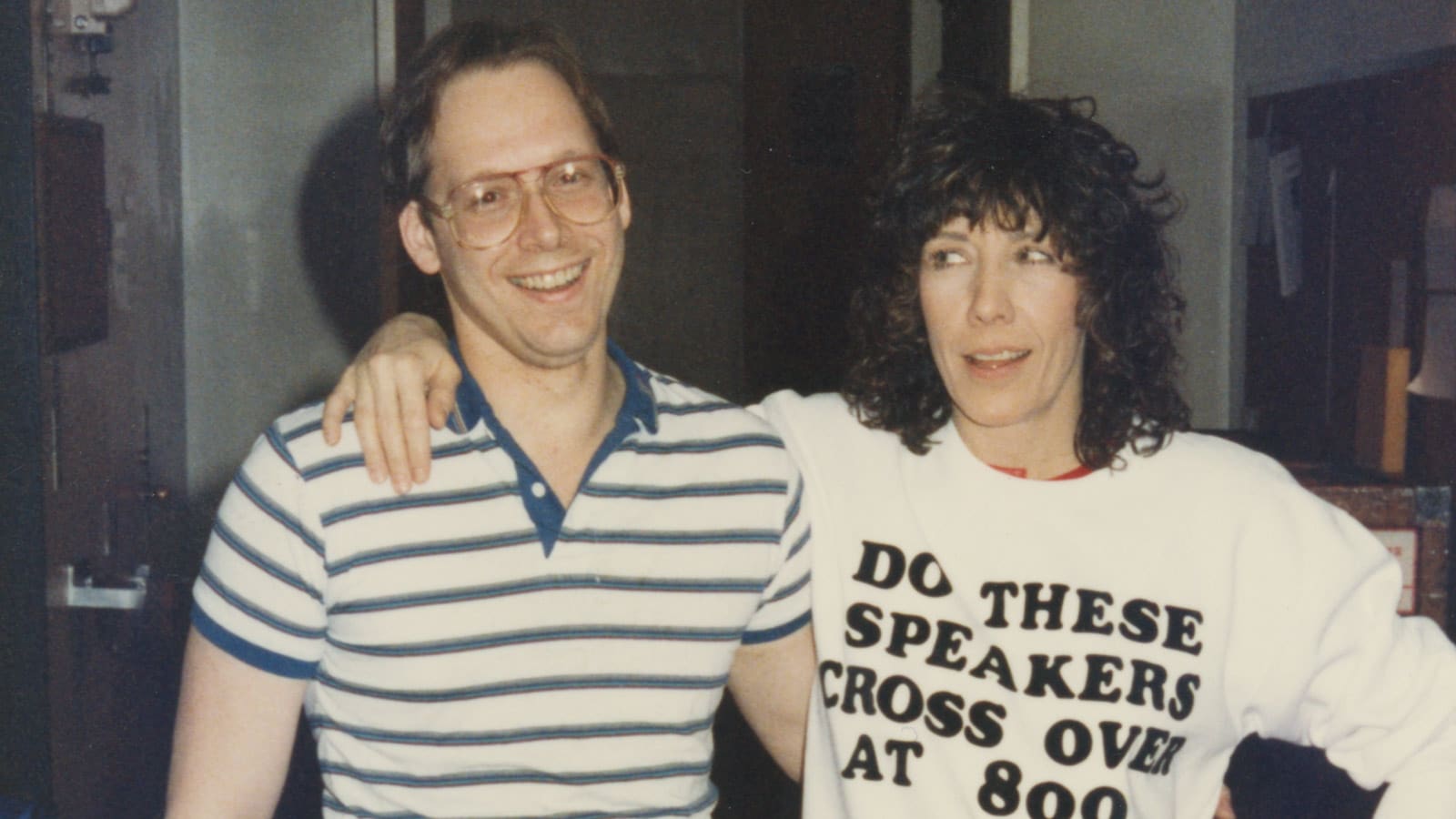
500Hz can be considered as the 'ideal' crossover point for a big 2 way,
freely interpreted from the great minds of the past.
+ or - 300Hz and you're fine, depending on the driver.
Many would argue hornloading 'all the way' is sometimes the better solution.
I agree, but I wouldn't choose this path by using more than 2 frontloaded horns, hornloaded subs excluded.

Last edited:

In this thread one loudspeaker cannot be neglected.
Nowadays the JBL M2 & 4367 spring to mind first when it comes to 2 way large format monitor speakers, but John Meyer introduced his former flagship monitor speakers almost 20 years ago.
The X-10 ticks all the boxes of this thread and easily beats the M2/4376 on SPL capability.
Meyer began production of their own drivers to improve longevity and reliability in the field. These drivers replace modified Yamaha and JBL drivers in their speakers.The plant is located in Berkeley, CA. Drivers are assembled in small batches. This approach has the potential for better implementation and quality control, compared to the large OEMs.
Attachments
Last edited:
The X-10 was launched in 2000, a high-performance studio monitor using PressureSensing Active Control technology to compare input and output levels. The system provides consistent LF reproduction, regardless of playback level.

Quotes from MixOnline and other sources:
"In the most basic sense, the X-10 High-Resolution Linear Control Room Monitor is a two-way system, combining a 15-inch woofer and HF compression driver in a vented 30x31x21-inch (HxWxD) enclosure. Internal bi-amplification is capable of pushing the system to SPLs as high as 136 dB (at 1 m). Although this description is technically accurate, it could easily lead one to believe that the X-10 is ordinary. And the X-10 is anything but ordinary: It's a two-way system that delivers extended bandwidth (22 to 17k Hz, +/-2 dB). It's a horn system that doesn't have a characteristic "horn" sound. It's a large, high-SPL system that offers transient response that rivals (or bests) the performance of electrostatic panels, and by using a single LF driver, the designers have sidestepped the lobing and comb-filtering problems associated with dual-woofer designs."
“Meyer developed their own compression driver for the X10 — a custom-built four-inch device with an aluminium alloy diaphragm, high compression ratio: 4” to 1“ exit and ferrofluid in the gap. One of the innovative aspects of its design is that the diaphragm is supported by a hybrid suspension arrangement which has been designed to remain quiet when it moves, unlike the folded metal suspension designs of most equivalent compression drivers.”
"In any radical loudspeaker development there has to be a basic starting point; a set of design principles, if you like, which will be followed. There is a single 15-inch LF driver, crossing over to a four-inch compression driver with a constant-Q waveguide, or horn, at 500Hz. Dual LF drivers were ruled out, as above 250Hz the resultant comb-filtering effect is unacceptable.
The LF driver has a four-inch diameter voice coil suspended in a very high flux, quoted at 1.5 million Maxwell, which is generated by dual concentric rings of Neodymium magnets. The recognised principle of a long magnetic gap and shorter length coil is used. Linearity of excursion is the aim, as any unfaithful following of the signal results in the generation of harmonics, which will colour the mid register above the intended output range of the sub unit."
"The constant Q waveguide was extensively refined to avoid imaging distortion lobing and it is claimed that 1/12 octave analysis does not detect any.
An accurate phase alignment has been a particular requirement to ensure a high-order impulse response. In fact, the brochure illustrates what the X-10 achieves in comparison with an unspecified electrostatic loudspeaker, which are always rated as superior in this regard.
Both transducers are driven by on-board Class AB/H Mosfet amplifiers with 650W available for the HF section and 1200W for the LF section. Apparently, both operate as Class-A up to 40W, which, if you think about it, is actually quite a substantial part of the intended dynamic range, quoted as 126dB SPL continuous, peak being 10dB higher."

Quotes from MixOnline and other sources:
"In the most basic sense, the X-10 High-Resolution Linear Control Room Monitor is a two-way system, combining a 15-inch woofer and HF compression driver in a vented 30x31x21-inch (HxWxD) enclosure. Internal bi-amplification is capable of pushing the system to SPLs as high as 136 dB (at 1 m). Although this description is technically accurate, it could easily lead one to believe that the X-10 is ordinary. And the X-10 is anything but ordinary: It's a two-way system that delivers extended bandwidth (22 to 17k Hz, +/-2 dB). It's a horn system that doesn't have a characteristic "horn" sound. It's a large, high-SPL system that offers transient response that rivals (or bests) the performance of electrostatic panels, and by using a single LF driver, the designers have sidestepped the lobing and comb-filtering problems associated with dual-woofer designs."
“Meyer developed their own compression driver for the X10 — a custom-built four-inch device with an aluminium alloy diaphragm, high compression ratio: 4” to 1“ exit and ferrofluid in the gap. One of the innovative aspects of its design is that the diaphragm is supported by a hybrid suspension arrangement which has been designed to remain quiet when it moves, unlike the folded metal suspension designs of most equivalent compression drivers.”
"In any radical loudspeaker development there has to be a basic starting point; a set of design principles, if you like, which will be followed. There is a single 15-inch LF driver, crossing over to a four-inch compression driver with a constant-Q waveguide, or horn, at 500Hz. Dual LF drivers were ruled out, as above 250Hz the resultant comb-filtering effect is unacceptable.
The LF driver has a four-inch diameter voice coil suspended in a very high flux, quoted at 1.5 million Maxwell, which is generated by dual concentric rings of Neodymium magnets. The recognised principle of a long magnetic gap and shorter length coil is used. Linearity of excursion is the aim, as any unfaithful following of the signal results in the generation of harmonics, which will colour the mid register above the intended output range of the sub unit."
"The constant Q waveguide was extensively refined to avoid imaging distortion lobing and it is claimed that 1/12 octave analysis does not detect any.
An accurate phase alignment has been a particular requirement to ensure a high-order impulse response. In fact, the brochure illustrates what the X-10 achieves in comparison with an unspecified electrostatic loudspeaker, which are always rated as superior in this regard.
Both transducers are driven by on-board Class AB/H Mosfet amplifiers with 650W available for the HF section and 1200W for the LF section. Apparently, both operate as Class-A up to 40W, which, if you think about it, is actually quite a substantial part of the intended dynamic range, quoted as 126dB SPL continuous, peak being 10dB higher."
Attachments
-
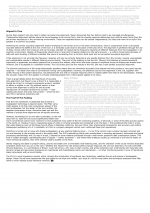 Sound On Sound - LOUDSPEAKER TECHNOLOGY REDEFINED_MEYER SOUND X10 MONITORS_Page_3_Small.png261.9 KB · Views: 121
Sound On Sound - LOUDSPEAKER TECHNOLOGY REDEFINED_MEYER SOUND X10 MONITORS_Page_3_Small.png261.9 KB · Views: 121 -
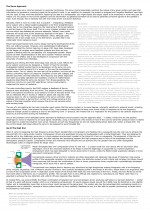 Sound On Sound - LOUDSPEAKER TECHNOLOGY REDEFINED_MEYER SOUND X10 MONITORS_Page_2_Small.png556.1 KB · Views: 141
Sound On Sound - LOUDSPEAKER TECHNOLOGY REDEFINED_MEYER SOUND X10 MONITORS_Page_2_Small.png556.1 KB · Views: 141 -
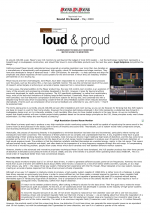 Sound On Sound - LOUDSPEAKER TECHNOLOGY REDEFINED_MEYER SOUND X10 MONITORS_Page_1_Small.png628.7 KB · Views: 156
Sound On Sound - LOUDSPEAKER TECHNOLOGY REDEFINED_MEYER SOUND X10 MONITORS_Page_1_Small.png628.7 KB · Views: 156 -
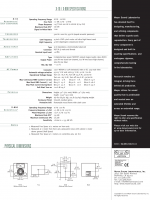 Meyer Sound - X-10 - Specsheet_Page_4_Small.png225.2 KB · Views: 199
Meyer Sound - X-10 - Specsheet_Page_4_Small.png225.2 KB · Views: 199 -
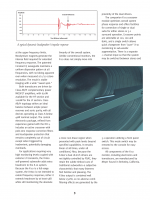 Meyer Sound - X-10 - Specsheet_Page_3_Small.png648.5 KB · Views: 173
Meyer Sound - X-10 - Specsheet_Page_3_Small.png648.5 KB · Views: 173 -
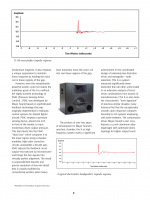 Meyer Sound - X-10 - Specsheet_Page_2_Small.png280.5 KB · Views: 183
Meyer Sound - X-10 - Specsheet_Page_2_Small.png280.5 KB · Views: 183 -
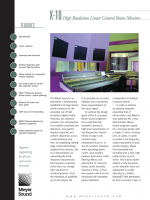 Meyer Sound - X-10 - Specsheet_Page_1_Small.png660.8 KB · Views: 202
Meyer Sound - X-10 - Specsheet_Page_1_Small.png660.8 KB · Views: 202
Last edited:
My horns are ~40cm in depth, which is ~220hz cutoff.
I've probably learned the most about horns from this thread and JMLC's thread on this forum as well (RIP). Jean believed that mouth cut off was a marketing spec, and that throat loading was the most important figure. Within that thread there are many profound comments about horns in general.
Jean Michel on LeCleac'h horns
I've got about 2 weeks before I am to receive the horns from Germany, and who knows how long the woofers from AE will take, I naively suspected that they would be shipped upon order lol.
I've probably learned the most about horns from this thread and JMLC's thread on this forum as well (RIP). Jean believed that mouth cut off was a marketing spec, and that throat loading was the most important figure. Within that thread there are many profound comments about horns in general.
Jean Michel on LeCleac'h horns
I've got about 2 weeks before I am to receive the horns from Germany, and who knows how long the woofers from AE will take, I naively suspected that they would be shipped upon order lol.
I've got about 2 weeks before I am to receive the horns from Germany, and who knows how long the woofers from AE will take, I naively suspected that they would be shipped upon order lol.
Which horns?
Speaking of Meyer Sound, their latest: https://meyersound.com/download/bluehorn-system-datasheet/?wpdmdl=250406&masterkey=5c7f21101524d
M-Noise test signal: M‑Noise Test Signal | Meyer Sound
M-Noise test signal: M‑Noise Test Signal | Meyer Sound
JMLC 23"wide X 15"deep.
They are from a guy I found off of ebay. ~400usd shipped for the pair. (his link is a few pages back)
They are from a guy I found off of ebay. ~400usd shipped for the pair. (his link is a few pages back)
Speaking of Meyer Sound, their latest: https://meyersound.com/download/bluehorn-system-datasheet/?wpdmdl=250406&masterkey=5c7f21101524d
M-Noise test signal: M‑Noise Test Signal | Meyer Sound
Much likey
Just sell me the horn though =)
Guys, just want to say how much i've enjoyed this thread.
Ro808, you are like an encyclopedia/archive of info !!!
The X-10 post brought back nostalgia over a big sound room I built around turn of century...I couldn't begin to afford the X-10's and got some less expensive, but still glorious, Meyer boxes.
In keeping with the thread title, did anyone notice in one of the articles, that even with the X-10's super duper servo 15", an X-800 sub was built to mate with the X-10....
Just can't have too much bass 😀
Ro808, you are like an encyclopedia/archive of info !!!
The X-10 post brought back nostalgia over a big sound room I built around turn of century...I couldn't begin to afford the X-10's and got some less expensive, but still glorious, Meyer boxes.
In keeping with the thread title, did anyone notice in one of the articles, that even with the X-10's super duper servo 15", an X-800 sub was built to mate with the X-10....
Just can't have too much bass 😀
Ribbon crossed at 550, Bohne Audio Classic Serie: Aktivlautsprecher mit patentiertem Bandchen
Attachments
Just some light reading before bedtime. Can you give me a synopsis so I don't have to search out someone with a doctorate in Physics.😀
Can we get a detailed list of the parts your going to use in this build. What are you using for the horn? Compression driver? What type of 15 inch driver? etc. What type of crossover network are you planning? Passive or something else. What type of woofer cabinet? etc. etc.My horns are ~40cm in depth, which is ~220hz cutoff.
I've probably learned the most about horns from this thread and JMLC's thread on this forum as well (RIP). Jean believed that mouth cut off was a marketing spec, and that throat loading was the most important figure. Within that thread there are many profound comments about horns in general.
Jean Michel on LeCleac'h horns
I've got about 2 weeks before I am to receive the horns from Germany, and who knows how long the woofers from AE will take, I naively suspected that they would be shipped upon order lol.
AE Speakers by Acoustic Elegance which monsters?
Last edited:
Ribbon crossed at 550, Bohne Audio Classic Serie: Aktivlautsprecher mit patentiertem Bandchen
Bohne calls this line a homage to JBL.
It looks more like a homage to ESS.

Without sound, I see 3 women who really do their best to look as fertile as possible.
The X-10 post brought back nostalgia over a big sound room I built around turn of century...I couldn't begin to afford the X-10's and got some less expensive, but still glorious, Meyer boxes.
This was a highly appreciated Meyer 2-way from the 1980s (Notice the foam in the horn).
The image on the right shows John Meyer and his wife at the launch of the loudspeaker in 1979.
Attachments
Last edited:
Indeed.
Patent drawing and its bare horn.
Patent drawing and its bare horn.
Attachments
-
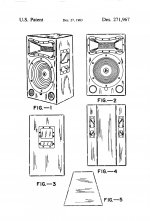 USD271967-1.jpg429.2 KB · Views: 788
USD271967-1.jpg429.2 KB · Views: 788 -
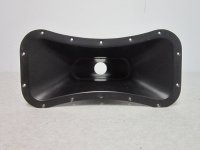 Meyer Sound 1 Inch Horn Flare-Waveguide, from UPA-1A Speaker_2.jpg191.1 KB · Views: 802
Meyer Sound 1 Inch Horn Flare-Waveguide, from UPA-1A Speaker_2.jpg191.1 KB · Views: 802 -
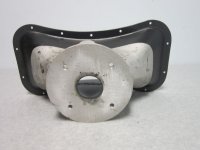 Meyer Sound 1 Inch Horn Flare-Waveguide, from UPA-1A Speaker_4.jpg173.5 KB · Views: 506
Meyer Sound 1 Inch Horn Flare-Waveguide, from UPA-1A Speaker_4.jpg173.5 KB · Views: 506 -
 Meyer Sound 1 Inch Horn Flare-Waveguide, from UPA-1A Speaker_1.jpg203.3 KB · Views: 501
Meyer Sound 1 Inch Horn Flare-Waveguide, from UPA-1A Speaker_1.jpg203.3 KB · Views: 501
Last edited:
And this is what the horn that doesn't sound like a horn looks like.
This horn, similar to the one in the X-10, was not filled with foam.
This horn, similar to the one in the X-10, was not filled with foam.
Attachments
Last edited:
- Home
- Loudspeakers
- Multi-Way
- Is it possible to cover the whole spectrum, high SPL, low distortion with a 2-way?



